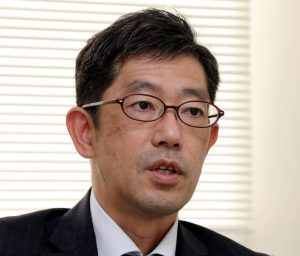To Nihon Hidankyo upon receiving Nobel Peace Prize: Hirofumi Tosaki, associate professor at the Center for Peace, Hiroshima University, says it is a “crisis warning” about the use of nuclear weapons
Nov. 20, 2024
Discussions must be based on nuclear deterrence theory
He has studied security from the perspective of nuclear arms control and nuclear strategy. Every time he listened to the testimonies of atomic bomb survivors, including the late Sunao Tsuboi, who served as co-chair of the Japan Confederation of A- and H-Bomb Sufferers Organizations (Nihon Hidankyo) and chair of the Hiroshima Confederation of A-bomb sufferers Organizations (Hiroshima Hidankyo), he questioned his research.
I have respect for the survivors who state “nuclear weapons should never be used again” at home and abroad for 68 long years since the founding of Nihon Hidankyo. The power of their testimonies is great, and that is precisely why the “nuclear taboo” continues.
However, with Russia’s invasion of Ukraine and other events, the risk of nuclear weapons use has risen to its highest level since the Cuban Missile Crisis in 1962. I believe the awarding of the Nobel Peace Prize to Nihon Hidankyo is a warning against such an international situation.
When we look at the international situation in recent years with regard to nuclear weapons, we see a mountain of challenges; the 2015 and 2022 Review Conferences of the Parties to the Treaty on the Non-Proliferation of Nuclear Weapons (NPT), the cornerstone of nuclear disarmament and non-proliferation, broke down twice in a row; the Strategic Arms Reduction Treaty (New START), the only remaining nuclear-related treaty between the United States and Russia, is set to expire in 2026; and the number of nuclear warheads held by China, which is struggling for hegemony against the United States, has increased.
Against the appeal of the survivors, nuclear disarmament has stalled, and this trend will not change any time soon. For example, “authoritarian nations” such as China, Russia, and North Korea prioritize their own goals over the norm that “nuclear weapons should not be used.” Unless these nations change their attitudes, Western nations, including Japan, will have no choice but to deal with them through nuclear deterrence. This is the status quo.
Nuclear deterrence is the theory that the stability of the world is maintained by each side possessing nuclear weapons to balance power. Atomic bomb survivors have been calling for a “theory of nuclear abolition” and urging to break away from the “theory of nuclear deterrence.”
Besides the “norm” that nuclear weapons should not be possessed or used, two other elements are necessary for the elimination of nuclear weapons: the "power" to deter violations and attacks by other countries when proceeding with the elimination of nuclear weapons, and the element of "interest" in that it cannot be in the interest of one's own country to possess or use nuclear weapons. Especially with regard to the "power" element, the possession of nuclear weapons and deterrence are inseparably linked. Therefore, it is important to take into account the theory of deterrence when considering concrete measures for abolition.
Perspectives on the present and the future, in addition to the past, are also important in moving the discussion forward. Nowhere is the nuclear issue discussed as much in peace education and media coverage as in the A-bombed cities. I think that in the future, the A-bombed cities will be requested to discuss nuclear issues from various angles more than ever, involving young people who live outside the cities.
(Interviewed by Kana Kobayashi, Staff Writer)
Profile
Hirofumi Tosaki
Born in Kagoshima City. Mr. Tosaki earned a doctoral degree in International Public Policy from Osaka University. After serving in such posts as Director of the Center for Disarmament, Science and Technology at the Japan Institute of International Affairs, he assumed his current position as Associate Professor at the Center for Peace, Hiroshima University in July of this year. He is 53 years old.
(Originally published on November 20, 2024)








